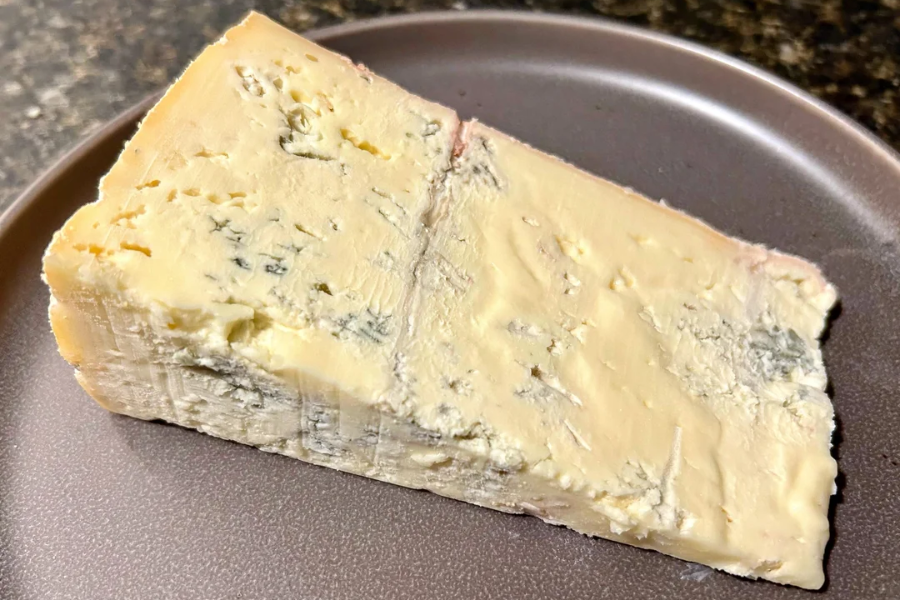Masgonzola: The Italian Cheese That Redefines Indulgence
Cheese lovers dream of discovering something new yet timeless. Masgonzola is exactly that — an artisanal Italian creation that layers the cloud-like softness of mascarpone with the velvety tang of Gorgonzola Dolce. It’s rich, decadent, and steeped in the craftsmanship of Italy’s cheese-making heritage.
This isn’t just cheese. This is a conversation piece, a centerpiece, a culinary passport to Lombardy’s most treasured flavors. And once you try it, ordinary cheese boards will feel… incomplete.
What is Masgonzola?
Masgonzola is a layered cheese, typically crafted by gently spreading fresh mascarpone over slabs of Gorgonzola Dolce, then aging the combination for just the right period.
-
Mascarpone: Silky, buttery, and mildly sweet — traditionally made from cream, with a lush texture.
-
Gorgonzola Dolce: A young, mild blue cheese with a creamy consistency and subtle blue veining, often aged for about 50 days.
The result is a cheese that marries creamy sweetness with the delicate tang of blue mold in perfect harmony.
Origins and Craftsmanship
Cheese-making in Italy is as much art as science. Masgonzola’s story begins in Lombardy, the same region that birthed Gorgonzola centuries ago.
Artisan producers combine fresh mascarpone — made from high-quality Lombard cream — with Gorgonzola Dolce in careful layers. The process requires skill to preserve each cheese’s character while allowing their flavors to mingle.
Cheese experts agree: Masgonzola is a testament to Italy’s mastery in balancing boldness with elegance.
The Flavor Experience
Close your eyes and take a bite of Masgonzola.
-
First comes mascarpone’s velvet embrace, coating your palate with gentle sweetness.
-
Then, Gorgonzola Dolce’s mellow tang blooms, adding depth without overwhelming.
-
The aftertaste? Smooth, lingering, slightly nutty — and utterly addictive.
This is not a confrontational blue cheese. It’s welcoming, approachable, and ideal for those curious about blue cheeses but hesitant to dive into the sharpest varieties.
Serving Masgonzola Like a Pro
Masgonzola deserves to be served in a way that highlights its layered beauty and balanced taste.
Best serving tips:
-
Bring to room temperature before serving — about 30 minutes out of the fridge.
-
Use a cheese knife to cut through the layers without smearing.
-
Present on a wooden board, allowing the creamy layers to shine.
Perfect Pairings for Masgonzola
Pairing is where Masgonzola truly shines. Its dual personality makes it remarkably versatile.
Food Pairings:
-
Fresh figs or pears for a burst of sweetness.
-
Honey drizzle to amplify mascarpone’s creaminess.
-
Walnut bread or crusty baguette for texture.
Masgonzola in the Kitchen
While Masgonzola is stunning on its own, it can transform recipes:
-
Risotto Finish: Stir in cubes for a silky, tangy finish.
-
Gourmet Pizza: Spread on just before serving for a decadent topping.
-
Stuffed Pasta: Use as filling for ravioli or tortellini.
-
Desserts: Pair with biscotti and berries for a cheese-course finale.
Nutrition and Quality
Masgonzola is a full-fat cheese — and unapologetically so. It’s a source of:
-
Calcium
-
Protein
-
Vitamins A and B12
Like all indulgences, it’s best enjoyed in moderation. Always choose Masgonzola from trusted producers who follow traditional Italian standards to ensure purity and flavor integrity.
Why Cheese Experts Love Masgonzola
According to Italian cheese authorities and slow-food advocates, Masgonzola’s appeal lies in its balance. It bridges two worlds — the fresh, creamy mascarpone and the softly pungent Gorgonzola Dolce — in a way that’s both gourmet and approachable.
It’s often recommended by chefs for beginner cheese enthusiasts venturing into the world of blues, as well as seasoned palates seeking something uniquely satisfying.
How to Store Masgonzola
-
Keep wrapped in wax paper, then in loose foil or a breathable container.
-
Store in the vegetable drawer of your fridge (4–6°C).
-
Consume within a week of purchase for peak freshness.
Where to Find Masgonzola
Masgonzola is not yet a supermarket staple outside Italy, but specialty cheese shops and fine food importers often carry it. Some artisan dairies ship internationally.
If traveling in Lombardy, visiting a local caseificio (cheese dairy) for fresh Masgonzola is a must. There’s nothing quite like tasting it at the source.
Frequently Asked Questions About Masgonzola
Q1: Is Masgonzola the same as Gorgonzola Dolce?
No. While Gorgonzola Dolce is a component, Masgonzola adds a layer of mascarpone, creating a richer, more indulgent flavor.
Q2: Does Masgonzola taste strong?
Not particularly. The mascarpone softens the tang of Gorgonzola Dolce, making it milder than many blue cheeses.
Q3: Can Masgonzola be frozen?
It’s not recommended — freezing can disrupt its creamy texture and layered integrity.
Q4: Is Masgonzola vegetarian?
It depends on the rennet used. Some artisanal versions use animal rennet, others use vegetarian alternatives. Always check the label.
Q5: What makes Masgonzola special?
Its harmony of flavors — creamy, tangy, and slightly sweet — makes it unlike any other cheese.
Final Thoughts: Why Masgonzola Belongs on Your Table
Masgonzola is more than a cheese. It’s an experience. From its layered appearance to its luxurious texture and nuanced taste, it’s the ultimate statement of indulgence and tradition in one bite.
If you value food that tells a story and leaves a lasting impression, Masgonzola is a treasure worth discovering — and savoring often.

